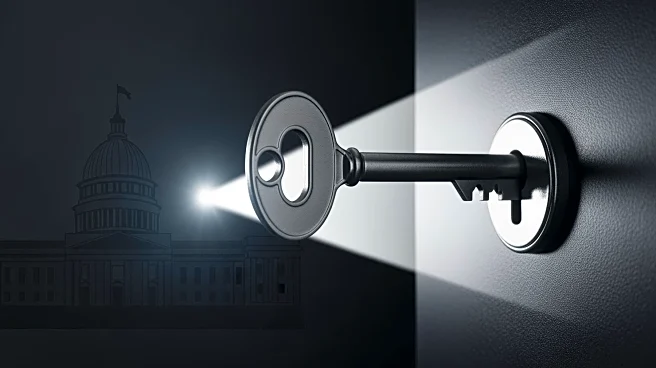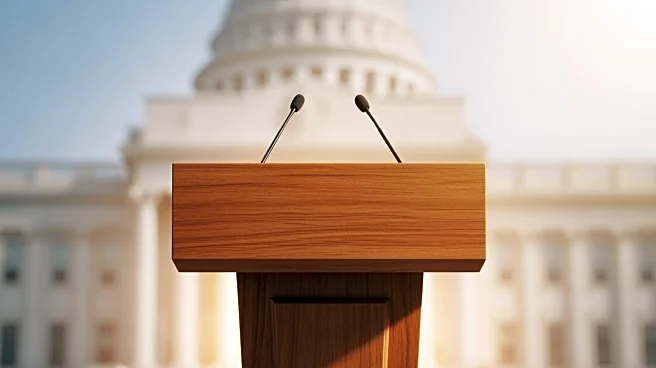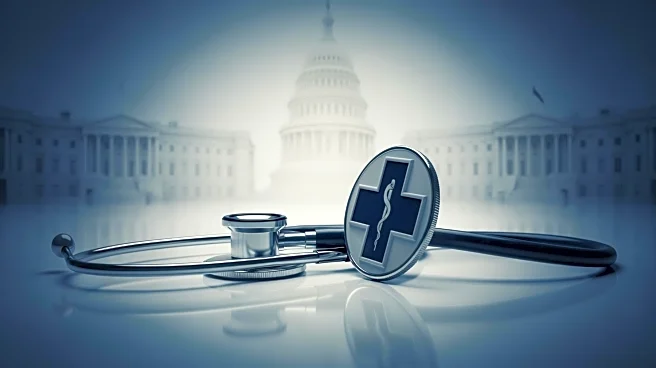What's Happening?
The Senate has moved forward with a House-passed funding measure aimed at ending the longest government shutdown in U.S. history. This development comes after prolonged negotiations and political standoffs
that have left many federal operations in limbo. The funding bill, which was advanced late Sunday night, seeks to restore normalcy to government functions and alleviate the impact on federal employees and services. The shutdown has been a significant point of contention, with various political factions debating the terms and conditions of the funding. The Senate's action marks a critical step towards resolving the impasse and resuming government operations.
Why It's Important?
The resolution of the government shutdown is crucial for the stability of federal operations and the welfare of government employees who have been affected by the halt in services. The shutdown has had widespread implications, disrupting various sectors and causing uncertainty among federal workers and contractors. Ending the shutdown will restore essential services and provide relief to those impacted by the suspension of government activities. It also reflects the ability of legislative bodies to negotiate and reach agreements despite political differences, which is vital for maintaining public trust in government institutions.
What's Next?
Following the Senate's advancement of the funding bill, the next steps involve finalizing the legislative process to officially end the shutdown. This includes potential further negotiations and adjustments to the bill to ensure it meets the requirements of all stakeholders involved. Political leaders and government agencies will need to coordinate efforts to resume normal operations and address any backlog or issues resulting from the shutdown. The focus will be on ensuring a smooth transition back to full functionality and addressing any lingering concerns from the shutdown period.












